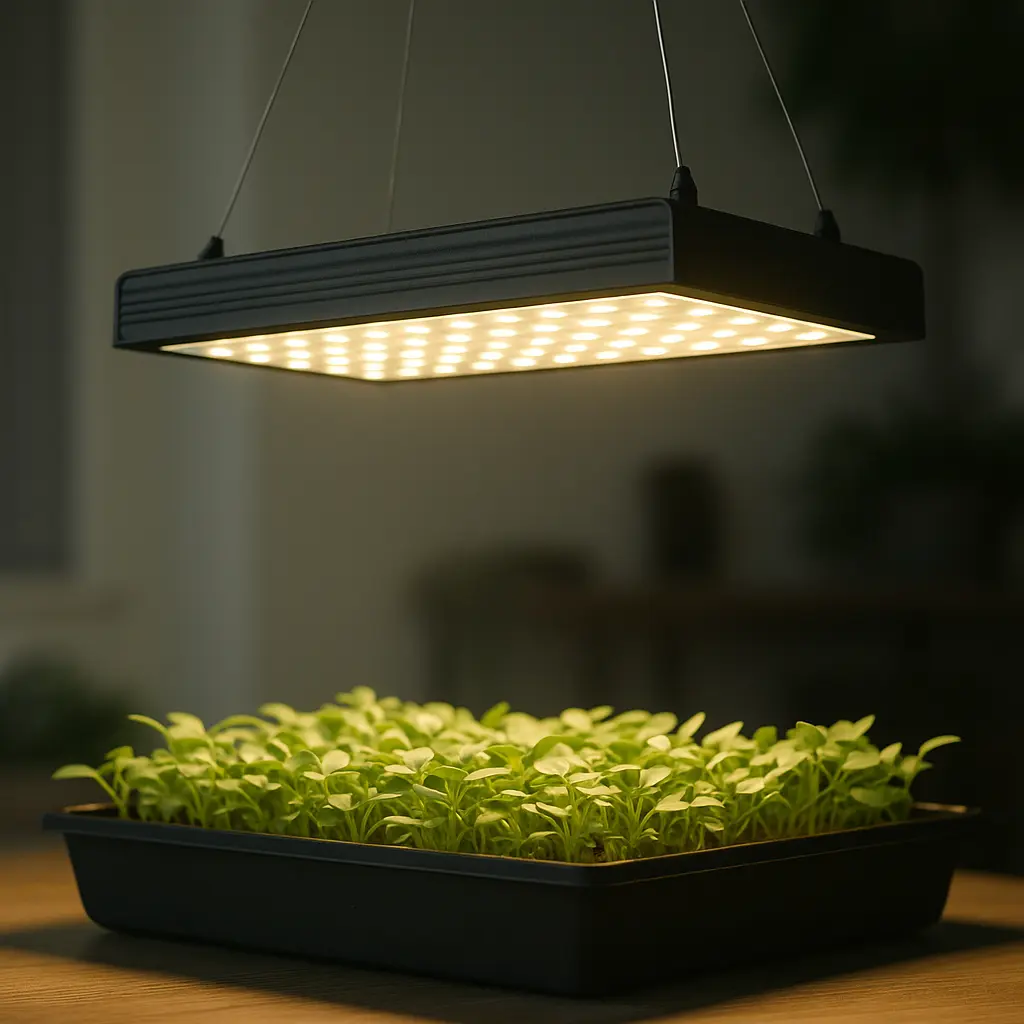
PAR stands for Photosynthetically Active Radiation. It refers to the portion of the light spectrum that plants use for photosynthesis - specifically 400 to 700 nanometers in wavelength, which includes most visible light.
In simple terms:
PAR = the light plants actually use to grow.
This simulator maps how that light spreads over your grow area, based on intensity and coverage - ideal for planning your setup.
How It Works
- 1. Enter your light's PPF output (in umol/s), the height above your canopy (in cm), and its beam angle (in degrees).
- 2. It figures out the circular area your light covers and then divides your PPF by that area.
- 3. Use default values or customize beam angle and target area if known.
- 4. The result is your PPFD (in umol/m2/s)-the average photon flux density hitting each square meter of your plants
Tip: Ideal PPFD for microgreens = 150-250 umol/m2/s
The calculator below tells you the "light dose" your plants receive so you can dial in the perfect setup.
Quick Legend
- PPF (umol/s): total photons emitted per second
- Height (cm): distance from light to plants
- Angle (degrees): width of the light cone
- PPFD (umol/m2/s): photons hitting each m^2 per second
Try It Now
Important Note
This is a simplified model and assumes uniform beam spread. For precision gardening, use a PAR meter to measure actual values at plant level.
More in the Tool Zone
Frequently Asked Questions
Ask a Question
All questions are reviewed before publishing.
